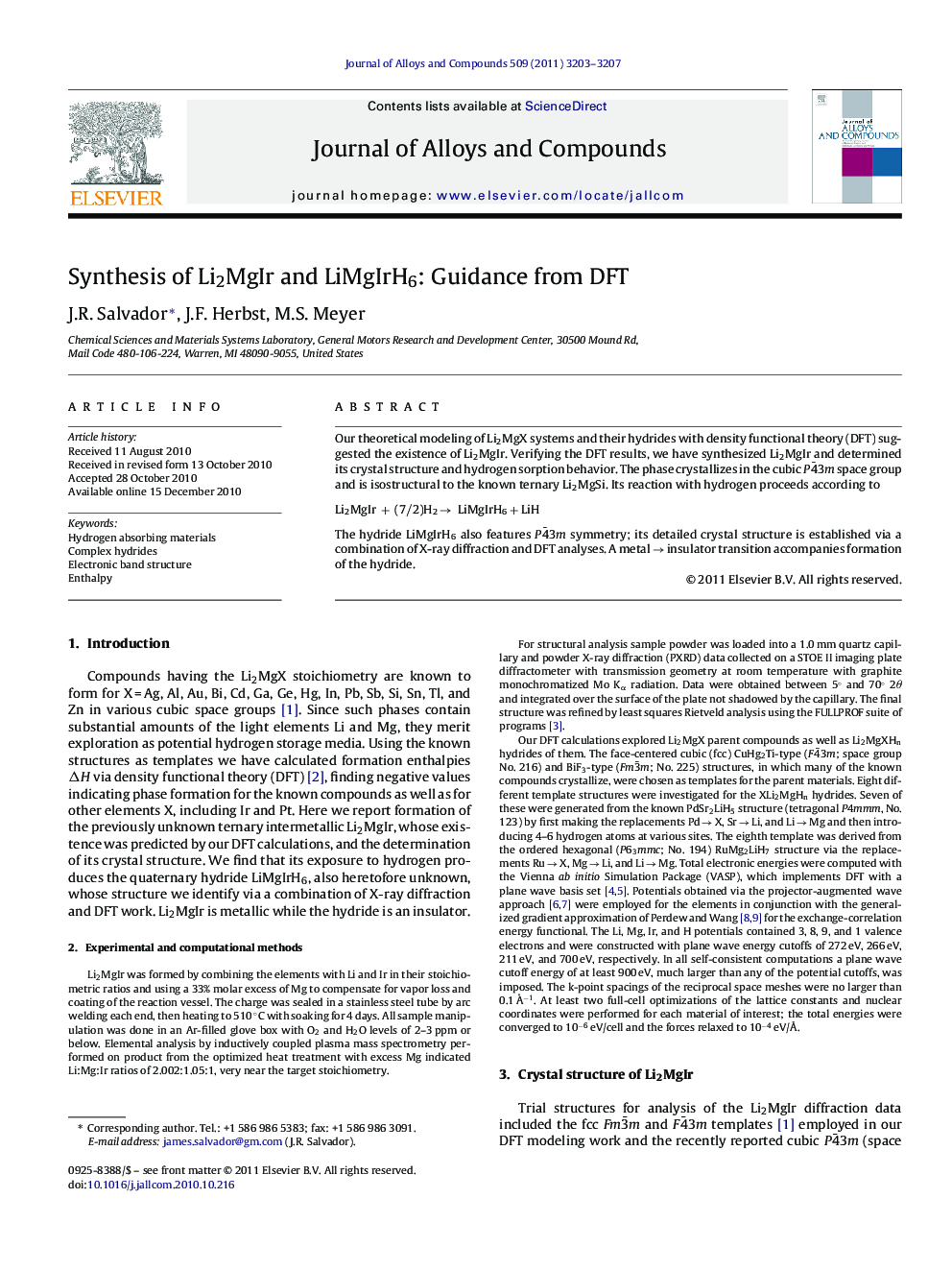| Article ID | Journal | Published Year | Pages | File Type |
|---|---|---|---|---|
| 1617949 | Journal of Alloys and Compounds | 2011 | 5 Pages |
Our theoretical modeling of Li2MgX systems and their hydrides with density functional theory (DFT) suggested the existence of Li2MgIr. Verifying the DFT results, we have synthesized Li2MgIr and determined its crystal structure and hydrogen sorption behavior. The phase crystallizes in the cubic P4¯3m space group and is isostructural to the known ternary Li2MgSi. Its reaction with hydrogen proceeds according toLi2MgIr + (7/2)H2 → LiMgIrH6 + LiHThe hydride LiMgIrH6 also features P4¯3m symmetry; its detailed crystal structure is established via a combination of X-ray diffraction and DFT analyses. A metal → insulator transition accompanies formation of the hydride.
Research highlights▶ The previously unknown compound Li2MgIr can be formed by direct combination of the elements, using excess Mg and the appropriate heat treatment in greater than 90% purity. The new ternary intermetallic crystallizes in the cubic P4¯3m space group and is isostructural to the known phase Li2MgSi. ▶ Li2MgIr hydrides according to the reaction Li2MgIr + (7/2)H2 → LiMgIrH6 + LiH. The proposed hydride LiMgIrH6 is isomorphic to the parent intermetallic Li2MgIr. ▶ Due to the formation of LiH during hydriding and the thermal decomposition of Li2MgIr above 550 °C, the Li2MgIr parent phase cannot be recovered under thermal dehydriding conditions. Although LiMgIrH6 is created during each hydrogenation cycle, the hydrogen storage capacity diminishes as an increasing number of secondary phases are progressively formed. Therefore, Li2MgIr is not a reversible hydrogen storage material.
